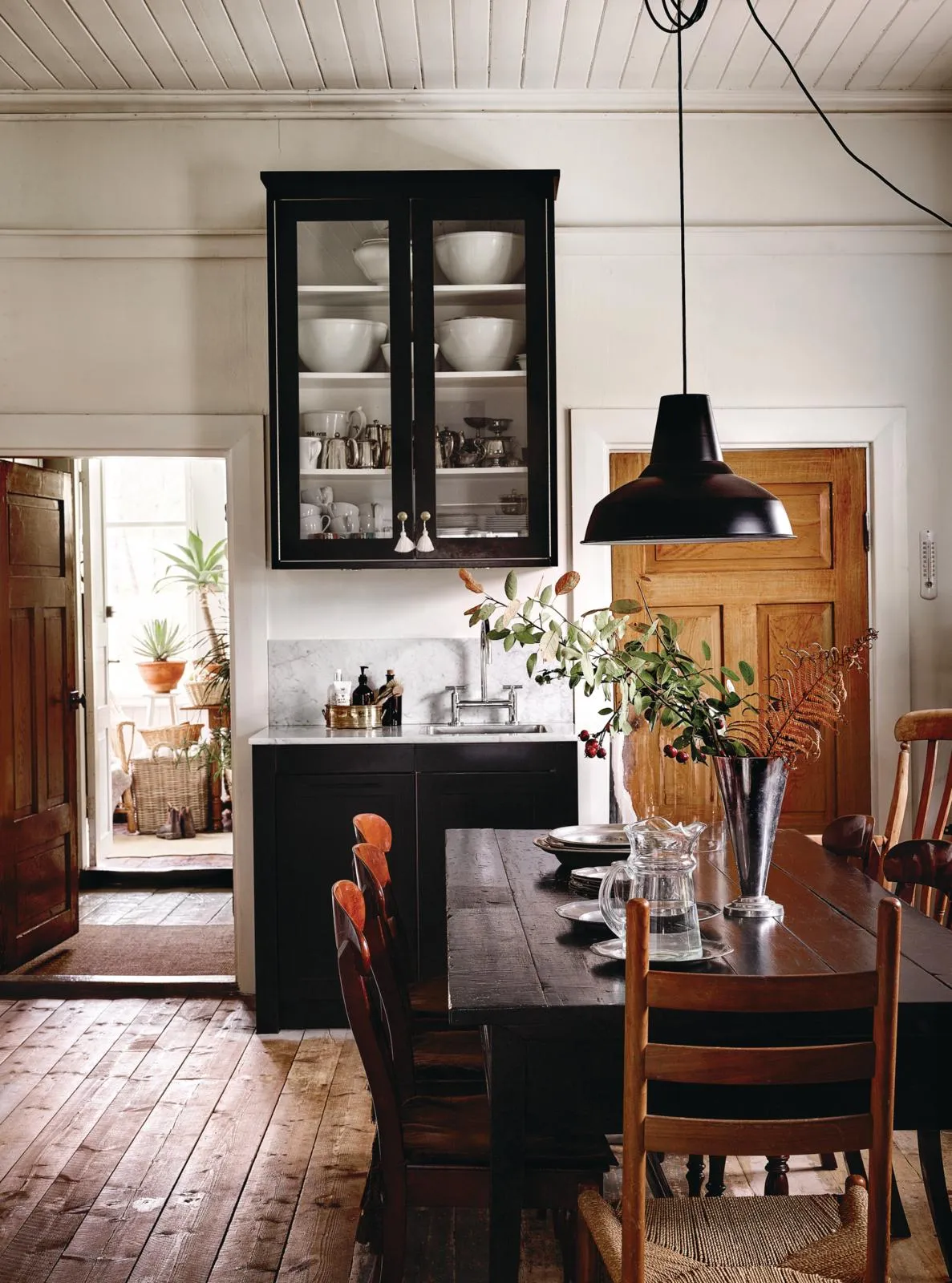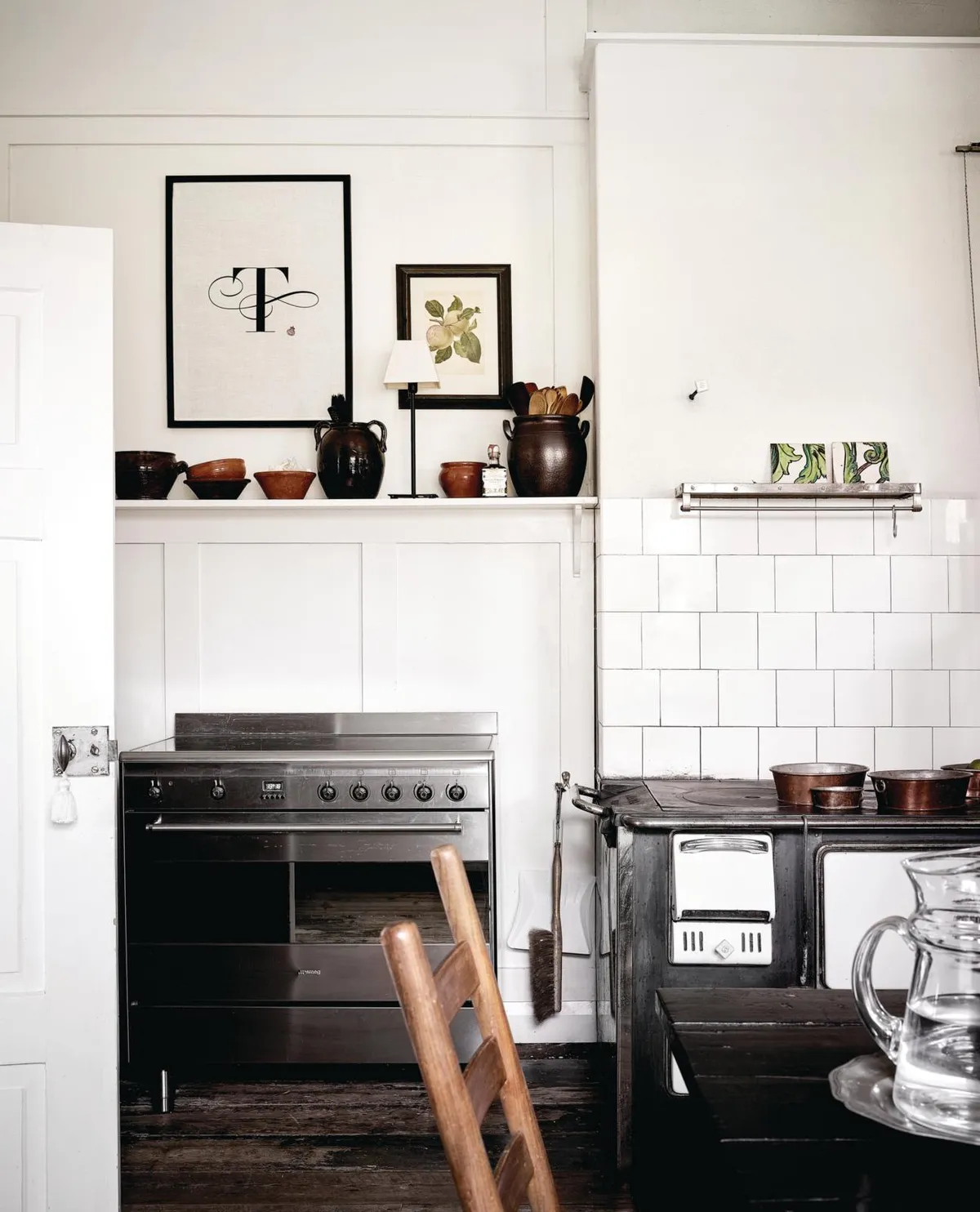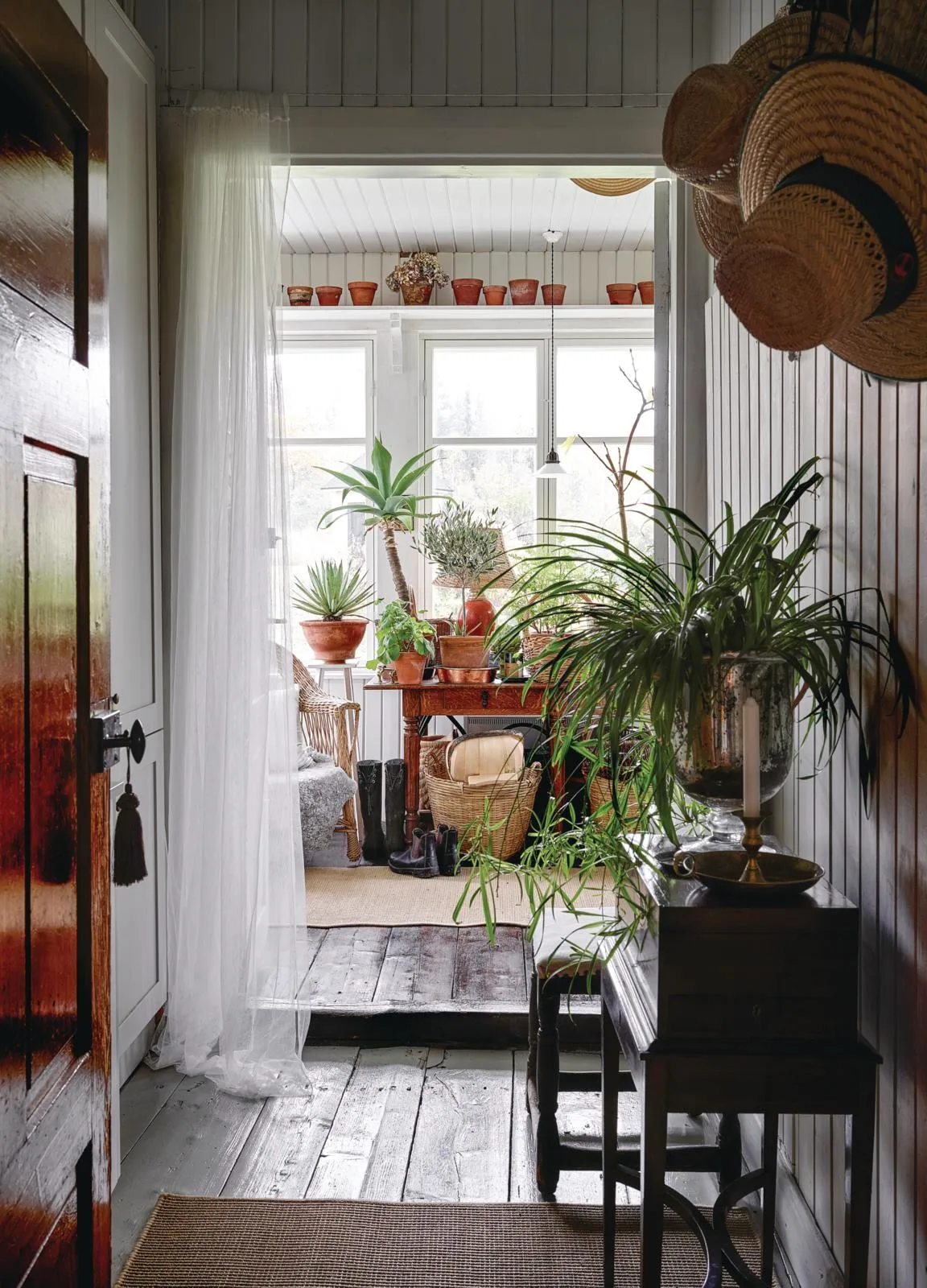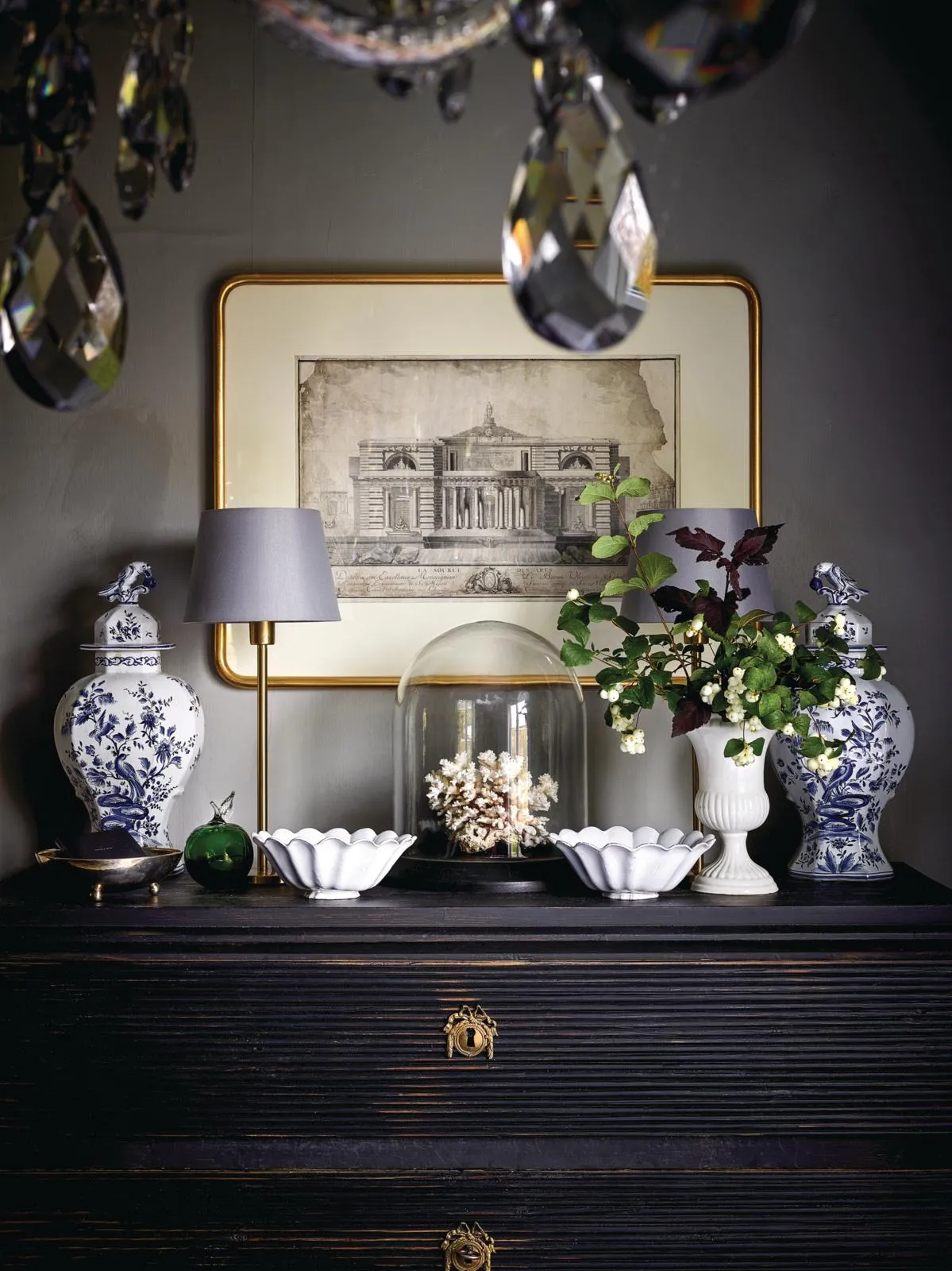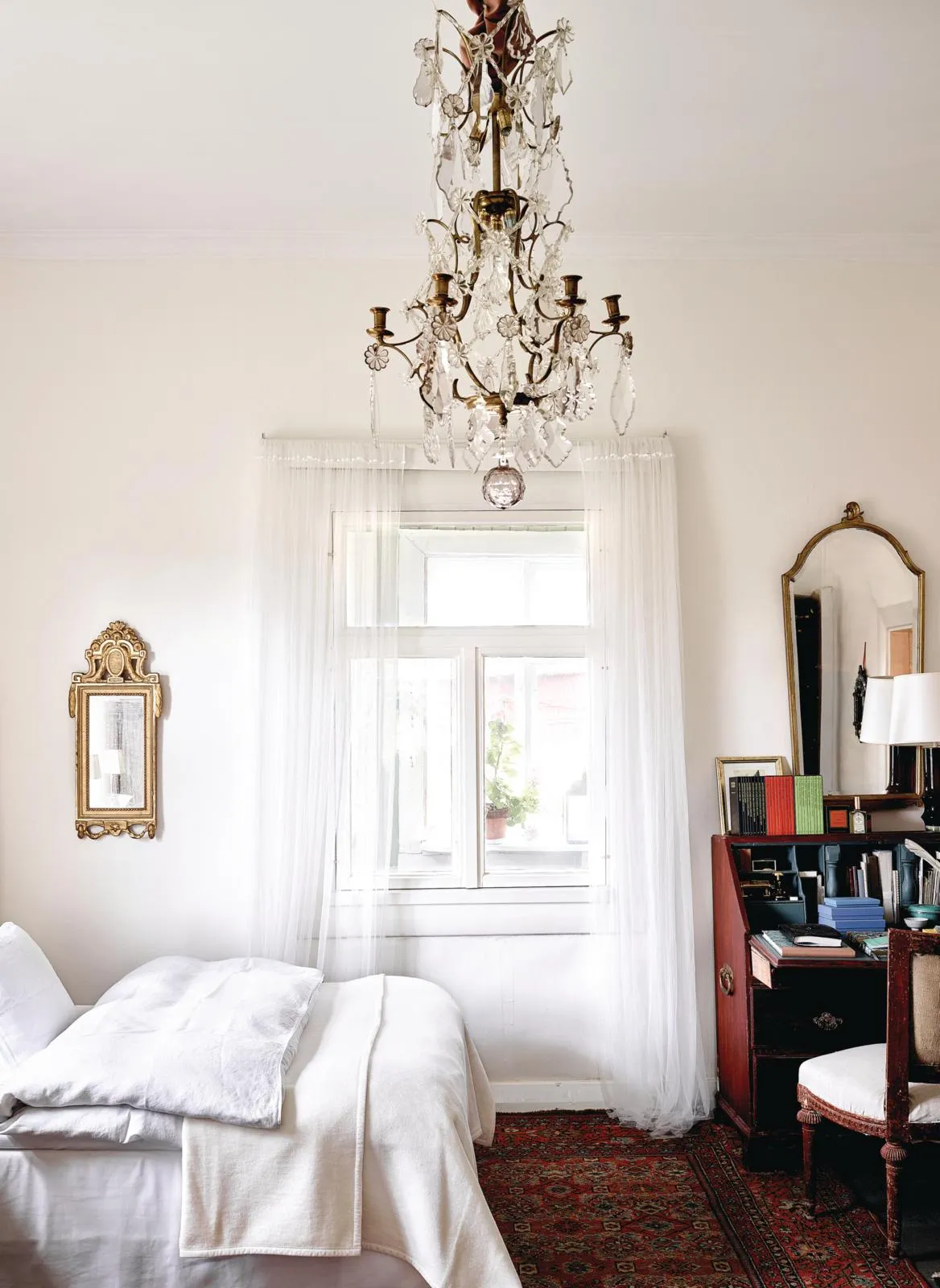‘We knew right away that it was meant to be,’ says interior architect, Ilkka Mälkiäinen, recalling his first visit to the farmhouse in western Finland that he and his partner, architect Janne Kupiainen, have been restoring since 2008.
The couple had been looking for a restoration project for several years without much success, but on arriving at the property, which dates back to 1800 and was converted into a house in the 1920s, they knew their search was finally over.
Externally, the traditional wooden building, with its painted tongue and groove panels and pretty dormer windows, was picture book perfect. Inside, however, it was another story. ‘The house hadn’t been lived in for several decades,’ Ilkka explains. ‘The ceilings had been lowered in the 1970s and there were tons of layers of ugly and inappropriate materials.’
Despite the lack of a bathroom or access to running water, dodgy electrics and a general air of abandonment, the building was structurally sound and exactly the challenge they were looking for. Basic renovations took a year to complete and, during that time, the hidden beauty of the house was revealed – ceilings were restored to their original heights, old lino was pulled up exposing original floorboards, layers and layers of wallpaper were peeled away and a bathroom was installed.
You might also like a boho factory conversion in Finland
As work progressed, they decided that decorative plans for the house should be guided by the simple lines of the period features they were revealing. Walls would be painted rather than papered as they had been in the past, in order to focus attention on the couple’s collections instead.
Twelve years on and the ground floor is almost complete. The rooms radiate from a central entrance hall, leading off in three directions in the manner of a stately home, and offer impressive views through aligned doorways when the doors are open. But the visual spectacle of each door framing the room beyond was something of a challenge when it came to decorating – decisions for individual rooms had to be made with adjoining spaces in mind.
As an interior architect, colour is very much Ilkka’s department and he was in charge of the palette used throughout the house. ‘I go by a rule that there can be a maximum of five basic colours used in the whole house,’ he says.
His preference is for muted hues with a hint of black, he explains: ‘They are more flattering than bright, clean tones.’ The paint shades in each room were carefully chosen to complement both the architectural details and the textiles and antiques they individually contain.
You might also like a neutral vintage-filled home
Another of Ilkka’s rules is that only sofas and beds should be new when bought. Apart from a pair of bedside tables and the kitchen cabinets, which the couple designed themselves, almost everything in the house is vintage or antique, found at auction or from dealers and flea markets. The walls are hung with architectural prints, gilt-framed mirrors and ornate 18th and early 19th-century clocks, which are something of a passion for Janne. ‘They are full of details such as columns and cornices, or animals. I admire the craftsmanship required to create them,’ he says.
Ilkka’s taste is more eclectic and he is a fan of creating ‘surprise moments here and there’, he says, explaining that his surprises often take the form of vignettes that feature interesting things from very different eras. This approach is evident throughout the house: in the sitting room, a taxidermy pheasant strides alongside a Bitossi lamp, in a corner of the dining room a pair of Philippe Starck Ghost chairs are grouped with a 19th-century sofa reupholstered in a bold Ikea stripe. ‘I always say that decoration should not be that serious,’ he says.
Plush, luxurious bedrooms are part of his signature style. ‘There can never be enough blankets, throws and pillows!’ he says. The aesthetic mix is underpinned by the couple’s careful positioning of mirrors, chairs and lighting, all of which bring symmetry and balance to the rooms. ‘Janne believes that mirrors and chairs only come in pairs,’ Ilkka laughs.
The couple are now embarking on the second phase of their ‘never-ending’ renovation project: more guest bedrooms and a bathroom upstairs. Time spent with friends is part of the charm of country living, they explain, and sharing the fruits of their labour is what makes it all worthwhile.






